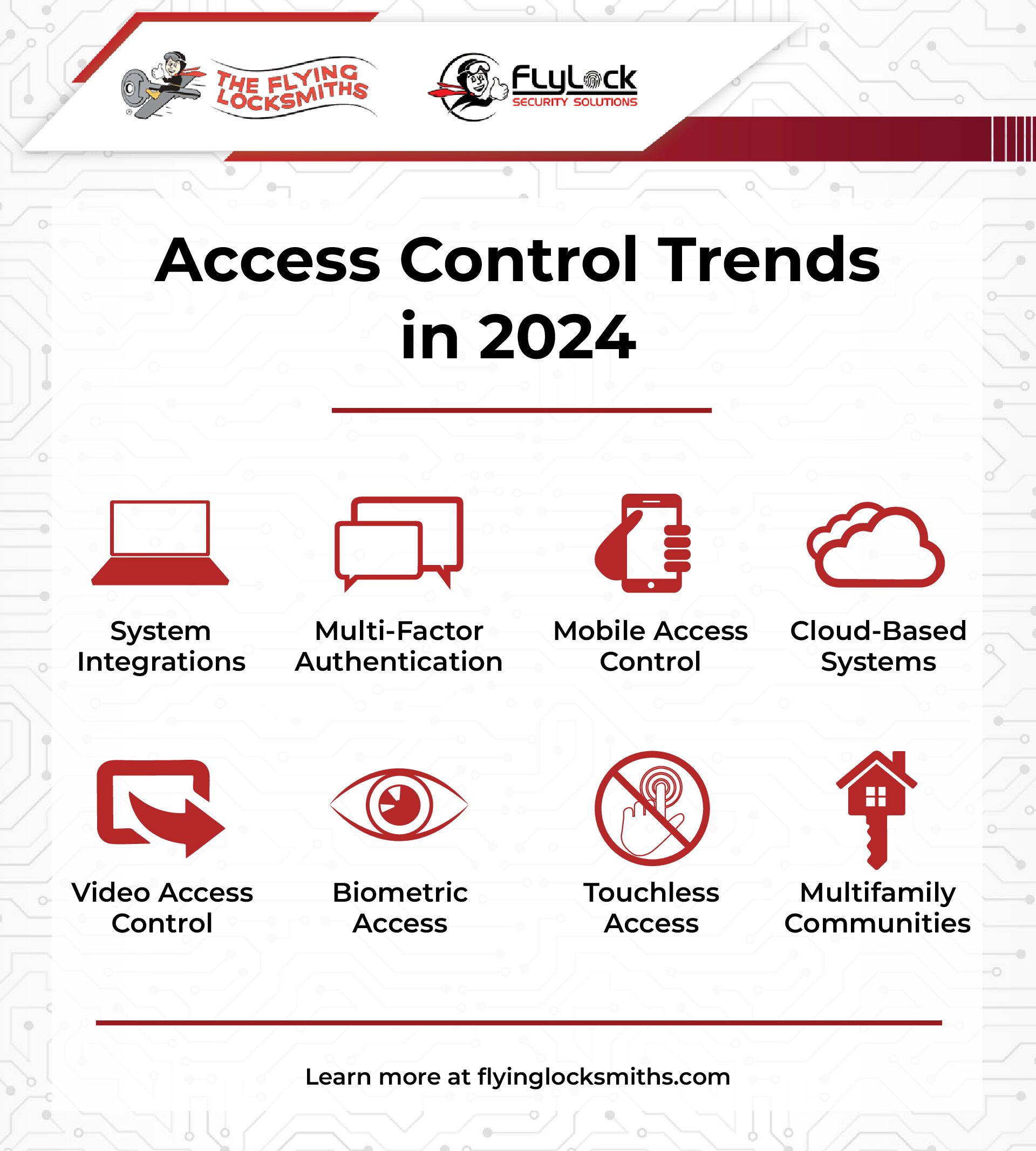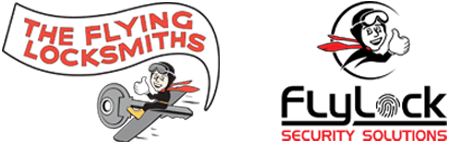
Jake Pflaumer
National Hardware Expert
jakep@flyinglocksmiths.com
The realm of access control has witnessed significant transformation, especially with the advent of cutting-edge access control technology. This article serves as a comprehensive overview that aims to address the most pressing questions surrounding access control technologies. As we move forward in an increasingly digital world, the importance of reliable security measures cannot be overstated. Here, we’ll delve into the various facets of access control systems to offer solutions for ensuring robust security in both digital and physical spaces.
 In today's fast-paced environment, businesses and institutions are keen to adopt the latest access control technologies to secure their premises and data. These technologies have evolved from traditional lock and key systems to sophisticated access control systems that leverage data analytics, biometric scans, and real-time video surveillance. Advanced technology solutions offer unprecedented control and information, allowing system administrators to make informed decisions like never before.
In today's fast-paced environment, businesses and institutions are keen to adopt the latest access control technologies to secure their premises and data. These technologies have evolved from traditional lock and key systems to sophisticated access control systems that leverage data analytics, biometric scans, and real-time video surveillance. Advanced technology solutions offer unprecedented control and information, allowing system administrators to make informed decisions like never before.
But what exactly comprises contemporary access control technologies? At its core, it's an amalgamation of products and systems designed to secure the user experience, ranging from physical infrastructure like gates and doors to digital solutions such as software and databases. This integration of hardware and software systems makes it possible to track and manage users in real time, thereby optimizing the overall security of a facility or network.
In the realm of access control security, data is an invaluable resource. It helps system administrators to scrutinize the behavior and preferences of users, allowing for adaptive and predictive security measures. This data-driven approach ensures that only authorized users gain access, and it allows for timely intervention should any irregularities be detected. For instance, next-generation video analytics can alert security personnel the moment an unauthorized user attempts to gain access, thereby mitigating risks in real time.
 Looking ahead, emerging access control trends show a lean toward integrated solutions, combining elements like biometric verification, real-time video monitoring, and multi-level user permissions. As technology continues to evolve, it becomes increasingly crucial for businesses to stay ahead of the curve in securing their information and assets.
Looking ahead, emerging access control trends show a lean toward integrated solutions, combining elements like biometric verification, real-time video monitoring, and multi-level user permissions. As technology continues to evolve, it becomes increasingly crucial for businesses to stay ahead of the curve in securing their information and assets.
The future of access control is exciting and full of promise. A plethora of technologies are converging to create robust, user-friendly, and secure systems that address a wide range of security concerns. So whether you are new to the world of access control or looking to upgrade your existing infrastructure, this guide offers a comprehensive overview of what you need to know.
TABLE OF CONTENTS
Access Control Technologies and Trends This Blog Includes:
An Overview: Understanding Access Control Technologies, Systems, and Their Security Implications
Physical Access Control: The Foundations of Security
Mechanical Access Control: The Bridge to Modern Solutions
Digital Access Control: A Paradigm Shift in Security
Digital access control marked a paradigm shift in the access control landscape. The introduction of cloud-based systems heralded a new era of security that was far more scalable and flexible. With cloud resources, organizations could implement data security measures to protect sensitive information. User authentication became multi-faceted, utilizing a combination of passwords, biometric scans, and two-factor authentication to validate users' identities. Cloud-based solutions offered the benefits of easy management and an elevated level of data protection.
Video security also found a role in digital access control, adding another layer of safety through real-time monitoring and data analytics. Digital access control system products are designed to manage a plethora of resources, from video security systems to user management and data storage solutions. The information collected through these systems is stored in the cloud, making it easily accessible for future reference and action. These cloud-based technologies have revolutionized the way businesses approach security, allowing them to tailor their systems to meet their specific needs.
The Role of Cloud-Based Technologies in Modern Access Control
The role of cloud-based technologies cannot be overstated when discussing the future of access control. Cloud-based systems offer unparalleled flexibility in the management of security, allowing organizations to allocate resources effectively. These solutions also allow for seamless integration of different types of security measures, from video surveillance to data encryption.
Thanks to the cloud, users can access system information from anywhere, enabling remote management and real-time updates. This has a profound impact on the ability to monitor and adapt security measures, providing a comprehensive, agile solution that responds to ever-changing threats and challenges.
Access Control System Technologies
Traditional vs. Cloud-Based Access Control Systems
Types of Access Credentials
Different systems require different forms of user identification, commonly known as access credentials. Traditional systems often use PIN codes, key cards, or fobs as a means of authentication. While these methods are functional, they can be susceptible to loss or theft.
Cloud-based systems have expanded the types of access credentials available, often incorporating advanced biometric methods such as fingerprint, facial recognition, or even retinal scans. These forms of authentication offer an extra layer of security and are more difficult to replicate or steal.
Communication Technologies Behind Access Control
Infrastructure Technologies: IP, PoE, and CAT6

Top Access Control Trends in 2024
The landscape of access control is continually evolving, adapting to new technological advancements and the diverse needs of businesses and institutions. In 2024, several key trends are defining the access control industry, offering smarter, more efficient ways to manage security. Below, we explore eight access control trends set to redefine how we approach and implement secure access measures.
System Integrations
The concept of a standalone access control system is increasingly considered outdated. Businesses now lean toward integrated access control solutions that allow for seamless communication between various systems. Security cameras systems, intrusion alarms, building management systems and other technologies can be combined to create a comprehensive access control solution. This spectrum of integrated resources enhances both security and user experience by making data and information easily shareable across platforms.
Multi-Factor Authentication
Mobile Access Control
Smartphones have become an integral part of access control. Businesses are moving from traditional keycards and fobs to mobile-based access control products that offer more secure and convenient options. This trend is a response to user demand for higher levels of convenience and the advanced security features that mobile technology can provide.
Cloud-Based Systems
Cloud-based access control systems are becoming more common. These cloud technologies offer unparalleled flexibility and scalability, allowing organizations to adapt quickly to changing security needs. The cloud-based approach to access control eliminates the need for complete overhauls when updates are necessary.
Video Access Control
Integration of real-time video cameras with access control systems provides a comprehensive security system. The combination of video and access control data provides enhanced security by offering more comprehensive monitoring of who is accessing a facility and their activities once inside.
Biometric Access Control
Biometric access control is becoming more reliable and affordable, making it an increasingly popular choice for businesses committed to high-level security. Technologies like fingerprint scans, palm readers and facial recognition are now commonplace, offering users a secure and efficient way to access controlled spaces.
Touchless Access Control
The demand for touchless access control technologies has surged in the wake of global health concerns. Solutions like facial recognition and wave to open reader technology offer a hygienic way to grant access, reducing the need for users to touch shared surfaces. These touchless products are becoming a staple in the access control resources offered by security companies.
Access-Controlled Multifamily Communities
The scope of access control technologies is expanding to include entire buildings and facilities with a major push towards fully integrated access control systems for multifamily communities. This large-scale implementation of access control is particularly useful for multifamily complexes with a variety of needs, such as access to common areas like a pool, fitness room, laundry facility, bike storage, dog wash station, and other common spaces in addition to the tenants unit.
Access control for multifamily communities offers centralized management over who can access different units and common spaces in the complex. Integrating access control has quickly become the preferred method due to the huge savings of not having to constantly rekey locks when a tenant loses their keys or their lease is up and they leave the community. Granting and revoking access is simple with various credential options that eliminate the need for a physical key.
Take Control of Your Access Control Needs with The Flying Locksmiths
In today's rapidly evolving landscape of access control technologies, making informed decisions can feel overwhelming. That's where The Flying Locksmiths come in. As a leader in the field, we are committed to providing cutting-edge access control solutions that not only secure your property but also simplify management and enhance user experience.
Why Choose The Flying Locksmiths for Your Access Control Needs?
When it comes to access control, few can match the breadth and depth of services offered by The Flying Locksmiths. Our team specializes in the latest technologies, ensuring that your access control systems are not just robust but also future-proof.
- Expertise in Role-Based Access Control (RBAC): As companies grow, the complexity of access management often grows with it. RBAC technology allows you to grant permissions based on roles within your organization, making the system both efficient and secure.
- Technology-Driven Solutions: The role of technology in access control cannot be overstated. Whether you're looking for biometric scanners, mobile authentication, or cloud-based management, we offer technology-driven solutions tailored to your needs.
- Comprehensive Access Control Services: From the initial consultation to the final installation, our end-to-end access control services cover every base. Our focus is not just on providing a product but offering a comprehensive solution that addresses all your access needs.
- Dedicated Support: Our commitment to you doesn’t end once your access control system is installed. We offer ongoing support, ensuring that your systems remain up-to-date and effective in the face of evolving threats.
- Trusted by Many: Countless businesses and institutions have entrusted their access control needs to us, and we've consistently delivered. Our reputation in the access control industry speaks for itself.


